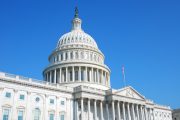
Several recent polls show the American people to be in a sour mood and anxious about the future, according to an op-ed column in the New York Times.
Polls by NBC News/Wall Street Journal, Rasmussen, Pew Research, and McClatchy confirm this with results showing President Obama and his legislative agenda, the Democrat and the Republican parties, and Congress suffering from increasingly negative ratings by American voters and citizens.
President Obama’s rating has fallen below 50 percent for the first time since his inauguration and has entered “a danger zone for presidents heading into a midterm election year,” according to Steven Thomma of the McClatchy Washington Bureau.
Dropping below 50 percent is a warning sign of political peril if not corrected. Since 1962, presidents with approval ratings below 50 percent have lost an average of 41 seats in midterm elections. That’s precisely the number that would cost Democrats control of the House this time.
Specifically, Obama’s overall approval rating has dropped from 61 percent in April 2009 to 47 percent in December. For his handling of the economy, those disapproving have jumped from 31 percent in February 2009 to 51 percent
In December a year ago, Obama’s personal rating was 45 percent “very positive.” A year later that number is 29 percent, while those rating him “very negative” jumped from 8 percent to 22 percent.
In December 2008, 30 percent of those polled were “extremely confident” that the President “had the right set of goals and policies.” A year later that number dropped to 19 percent, while those “not at all confident” doubled from 16 percent to 33 percent.
When quizzed about the economy, those “not at all confident” in Obama’s goals and policies jumped from 29 percent last June to 36 percent in December.
Congress suffers in this same poll, with those disapproving jumping from 54 percent in February to 68 percent in December. When asked how Congress should be rated on its overall performance, only 7 percent rated it “one of the best” or “above average,” while 58 percent rated Congress’ performance “below average” or “one of the worst”
This was confirmed by the Rasmussen poll, with 58 percent of respondents saying Congress is doing a poor job, the worst rating since November 2006.
Forty-three percent of all voters in that poll say that “most members of Congress are corrupt,” and 79 percent say that “most members of Congress put their own careers first.”
When asked in the NBC/WSJ poll if “your representative deserves to be reelected, or do you think that it is time to give a new person a chance?”, half of those polled want a change.
The Democratic and Republican parties suffered mightily as well. In February 2009, the Democratic Party was rated “very positive” by 20 percent of those polled. By December that number had been cut in half, while those rating it “very negative” doubled from 13 percent to 26 percent.
Republicans were viewed “very positive” by 18 percent in September 2008 but by December 2009 that dropped to just 5 percent.
Questioned if they thought “American is in a state of decline,” 61 percent of those responding agreed. And when asked if Obama’s healthcare plan is a good idea or not, 47 percent said it is a bad idea, up from just 26 percent back in April. In just three months, those in favor of passing the healthcare plan dropped from 45 percent to 41 percent, while those favoring keeping the current system rose from 39 percent to 44 percent.
Regarding the stimulus plan, a plurality say that the plan has hurt the economy, and 51 percent say that more jobs would be created if the stimulus plan were cancelled outright.
When questioned about congressional leadership, House Speaker Nancy Pelosi “continues to be the best-known and least-liked member of [that] leadership.”
When it comes to foreign affairs, the general public “is in a decidedly inward-looking frame of mind [and is] apprehensive and uncertain about America’s place in the world.” For the first time in over 40 years, a plurality says the United States should “mind its own business internationally and let other countries get along the best they can on their own.”
Forty-four percent hold that “the U.S. should go our own way in international matters, not worrying about whether other countries agree with us or not.” This is the highest result since 1964.
When Rasmussen asked unaffiliated voters, in a three-way Generic Ballot test, which party they preferred, the Tea Party candidate came out ahead of the Democrat and the Republican candidate. Rasmussen explained:
For this survey, the respondents were asked to assume that the Tea Party movement organized as a new political party. In practical terms, it is unlikely that a true third-party option would perform as well as the polling data indicates. The rules of the election process — written by Republicans and Democrats — provide substantial advantages for the two established major parties. The more conventional route in the United States is for a potential third-party force to overtake one of the existing parties.
In commenting on their results, Rasmussen stated: “It appears that the policies of the Obama administration and the Democratic Congress are currently enough to unite both those who prefer Republicans and those who prefer the Tea Party route.” The Rasmussen study also showed that “Forty-one percent (41%) of all voters nationwide say Republicans and Democrats are so much alike that a new party is needed to represent the American people.”
In his op-ed piece, Brooks called the Tea Party movement “flamboyant” and “amateurish” with “mediocre” leadership. But under proper leadership, the passion of its supporters and their palpable and measurable unhappiness with the current political situation in Washington, he says the Tea Party “movement is likely to become a major force in American politics. After all, it represents arguments that are deeply rooted in American history.”
In the near term, the tea party tendency will dominate the Republican Party. It could be the ruin of the party, pulling it in an angry direction that suburban voters will not tolerate. But don’t underestimate the deep reservoirs of public disgust. If there is a double-dip recession, a long period of stagnation, a fiscal crisis, a terrorist attack or some other major scandal or event, the country could demand total change, creating a vacuum that only the tea party movement and its inheritors would be in a position to fill.



